

The Unique Architecture of Japanese Castles
|
Osaka city is an urban metropolis, a financial hub in which millions of people live and work in. Nestled in the centre of this sprawling city, however, is a historical building that can be said to be more emblematic of the city than any of its tall, fancy skyscrapers: Osaka Castle.
Osaka Castle is just one of the many castles that are dotted across the country. Most of Japan’s castles were built during the Sengoku period, also known as the Warring States period, a period between 1467-1568 when various regional leaders of small independent states fought each other for power. Small castles were built on elevated pieces of land, like hills and mountains, utilising the high natural terrain for defense purposes.These early castles were known as yamajiro (山城). Bitchu Matsuyama Castle in Okayama Prefecture is one of Japan’s 12 “original” castles (which is to say, these castles were built during or before the Edo period and have not been destroyed or reconstructed) and is the only the yamajiro on the list! Because of its location on a high altitude, in fall and winter, clouds gather around the castle, making it look like a floating castle in the sky! Later in the 16th century, after the reunification of Japan, leaders began building larger castles. Castles were no longer seen as defensive buildings, but served as the headquarters of the region’s administrative rulers. These larger castles were built in plains or on small hills, which are known as hirajiro (平城) and hirayamajiro (平山城) respectively. The flatter terrain and relative peace of the time allowed for towns to flourish around these castles. These towns are known as jokamachi (城下町), and they housed people from all strata of society, from samurai to villagers. Markets prospered as well thanks to trade facilitated by merchants and craftsmen. Nearly all of Japan’s big cities, including Osaka, Sendai (Miyagi Prefecture), and Nagoya (Aichi Prefecture) have had illustrious histories as castle towns. Though many of the old structures that populated castle towns have since given way to taller and more modern buildings, in some places like Kanazawa (Ishikawa Prefecture) and Hagi (Yamaguchi Prefecture), remnants of the city’s past as a castle town remain in the form of charming old streets and historical residences. What sets Japanese castles apart from castles found elsewhere in the world is its architectural features. Indeed, the tenshu (天守), or the keep, is the most identifiable part of the Japanese castle. The keep is multi-storied with curved, tiled roofs. They were not meant to be residences but were deemed the stronghold of defence of the castle and also a symbolic structure to show off the social status of the castle’s lord. Many Japanese castles are built on steep stone walls known as ishigaki (石垣). These stone walls are built to slope upwards in a concave curve, with the top parts of the wall completely vertical. They serve as foundations for the castle’s gates, towers, and walls, as well as the moat that usually surrounds the grounds. Additionally, they served as deterrents against attackers; the tall and steep walls made it difficult for intruders to enter the castle grounds easily. |
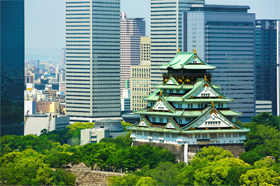 Osaka Castle © Japan Up Close, Web Japan 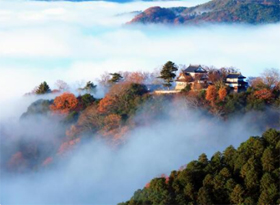 Bitchu Matsuyama Castle © photoAC 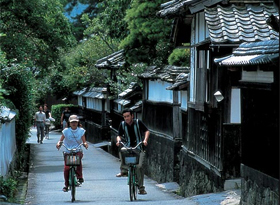 Hagi © Web Japan 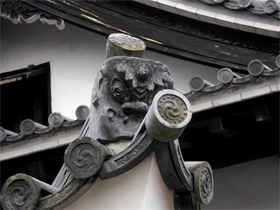 Matsue Castle © Matue Jozan Koen Administration Office 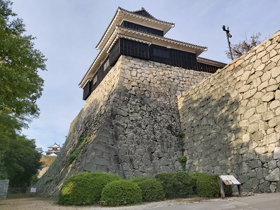 Matsuyama Castle © JCC |
|
The administrative centre of each castle is known as the honmaru (本丸). In some castles, the honmaru was also where the castle owners lived. Auxiliary areas where subordinates would live were known as ninomaru (二の丸, literally ‘second circle’), sannomaru (三の丸, literally ‘third circle’), and so on. Although it is known as the centre of the castle, the honmaru is not always located in the literal centre of the castle. There are three main styles of layouts that Japanese castles adopt, each style determining the placing of the honmaru differently. In Rinkaku style castles, the honmaru is in the literal centre of the castle grounds, surrounded by the ninomaru and sannomaru. This style prioritises defence in every direction but requires large swathes of land to build the castle grounds on. Osaka Castle is one such example of a castle built in the Rinkaku style. In Renkaku style castles, the honmaru and ninomaru are placed side by side, like a number eight. Morioka Castle in Iwate Prefecture uses this layout style. Finally, the Teikaku style places the honmaru within the ninomaru but it is still adjacent to castle walls. Teikaku style castles are usually built where the surrounding natural environment can serve as barriers to further beef up the defense of the castle. Okayama Castle in Okayama Prefecture is built alongside a river in this style.
As mentioned previously, only 12 “original” castles remain in Japan. There are: Hirosaki Castle in Aomori; Matsumoto Castle in Nagano; Inuyama Castle in Aichi; Hikone Castle in Shiga; Himeji Castle in Hyogo; Marugame Castle in Kagawa; Matsuyama Castle and Uwajima Castle in Ehime; Kochi Castle in Kochi; Matsue Castle in Shimane; Maruoka Castle in Fukui; and Bitchu Matsuyama Castle. Many others were destroyed over time, but the National Treasure Preservation Law enacted in the late 1920s led both national and local governments to conserve and improve historically significant sites like castles. Previously destroyed castles were rebuilt and reinforced with modern construction materials, however, some associations are striving to rebuild castles using traditional and historically-accurate construction materials and techniques. Of course, there are also castles that have been unrestored. Many of such unrestored castles have been incorporated into parks for the public to enjoy and explore. Fukuoka Castle, built during the early 17th century, used to be the largest castle on the island of Kyushu. It was torn down during the Meiji Period, leaving only some walls and guard towers in its place. These ruins are now part of Maizuru Park, which is a green oasis in central Fukuoka City. In spring, locals flock to the park to see pink cherry blossoms bloom against the rustic backdrop of the ruins’ stone walls. Even without its original keep, the grand and opulent atmosphere of the castle grounds can still be felt by visitors. In other places, castle grounds have been redeveloped to instead hold modern municipal buildings and schools. | 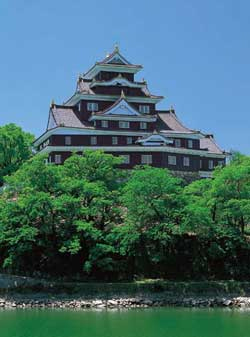 Okayama Castle © Web Japan 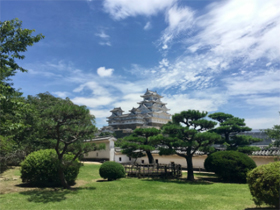 Himeji Castle © JCC 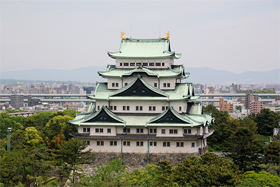 Nagoya Castle © Nagoya Castle General Administration Office 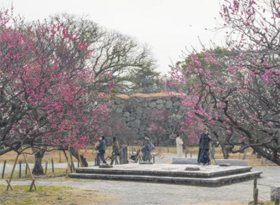 Maizuru Park © photoAC |
| From north to south, there are many regal castles that visitors can call upon when they visit Japan. Most castles are easily accessible from city centres, and house small museums and galleries so that visitors can learn more about the history of the castle and region, or about Japanese history in general. If you would like to travel back in time, why not take a trip to one of Japan’s many castles on your next trip to Japan? |
Resources
|
A Tour of Japanese Castles. Retrieved 25 February 2021, from https://web-japan.org/kidsweb/travel/castles/index.html |
|
Japan Creative Centre 4 Nassim Road, Singapore 258372 +65 6737 0434 / jcc@sn.mofa.go.jp https://www.sg.emb-japan.go.jp/JCC/ Nearest parking at Orchard Hotel & Delphi Orchard |
 |